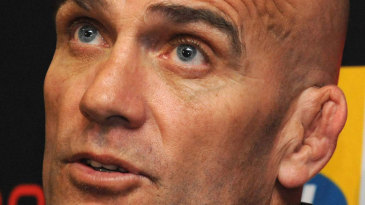- Renault news
'Bold' R31 experiment failed - Renault

- News:
-
Senna on a learning curve in 2011
- Preview:
-
'Other teams have taken strides forward, we have not'
- Teams:
- Renault
Renault technical director James Allision has described this year's car, with its unique front-exiting exhaust, as a "bold but ultimately failed experiment".
Renault took the blown-diffuser concept to new levels by positioning the car's exhaust at the front of the sidepods in order to energise the air flowing under the length of the car and improve downforce. The R31 proved successful in the early races, taking podiums at the Australian and Malaysian Grands Prix, but has since struggled for performance with just two points from the last five races.
The car has proved tricky to set up and has struggled for traction at slow-speed tracks, factors that have led Allison to admitting the concept ultimately failed.
"I regard it as a bold, but ultimately failed experiment" he said. "We were the only team to adopt a forward exhaust layout, and we did so with high hopes, buoyed by very strong wind tunnel numbers. We came out of the blocks adequately well, although it was clear from the first test that the delivered downforce was not as high as we had expected.
"The season which followed has been difficult for everyone at Enstone. The layout which had promised so much (and which, had it delivered, would have been almost impossible to copy) proved very tricky to develop and had a fundamental weakness in slow corners that has been an albatross around our neck all year. We look forward to moving on in 2012 with all-new exhaust rules and a chance to wipe the slate clean."
Blown diffusers will be banned under the 2012 regulations, which stipulate exhausts must exit from the top of the engine cover. Allison said work is well under way on the new car, but the team was preparing itself for an intense workload over the winter.
"This time of year is frantic," he said. "It is very busy right now, but the intensity of the new car will build steadily to insane levels as January approaches. There is always way more to do than time to do it, and yet somehow each year it all gets done in time to put the new car on the track for winter testing. A change for this year, which requires all teams to have passed their FIA crash tests before they are allowed to take part in pre-season testing, adds even more tension to an already difficult period."

